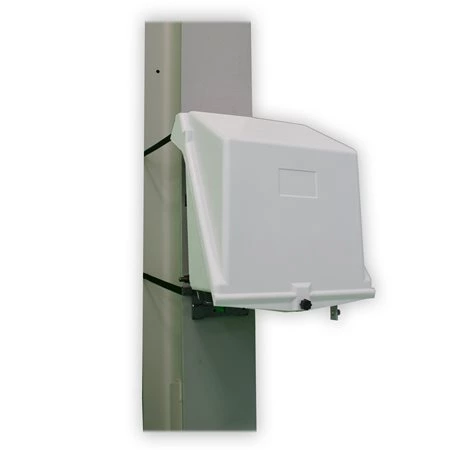Current Standards For Low Voltage Pole Mounted Circuit Breakers
As an important protection device in the distribution network, the performance and quality of Lv Pole Mounted Circuit Breakers directly affect the stability of the power system. In order to standardize product design, manufacturing and acceptance, my country has established a multi-level technical standard system covering key links such as equipment performance, test methods, and acceptance rules, effectively supporting the high-quality development of the industry.
The national standard GB/T 3804-2017 "3.6kV~40.5kV High Voltage AC Load Switch" clearly stipulates the mechanical life indicators of 12kV voltage level pole-mounted circuit breakers. Article 5.2 of the standard requires that the number of mechanical operations reaches more than 5,000 times, and the contact pressure deviation is controlled within the range of ±10%. Article 7.3.2 of GB/T 1984-2014 "High Voltage AC Circuit Breakers" specifically emphasizes that the rated short-circuit breaking current must complete the full opening action within 0.3 seconds, the contact separation speed must not be less than 2.8m/s, and the arcing time must be controlled within 15ms. In terms of insulation performance, the standard stipulates that the relative power frequency withstand voltage must reach 42kV (effective value), and the peak value of the lightning impulse withstand voltage must not be less than 95kV.
The power industry standard DL/T 402-2023 "Technical Conditions for 12kV High-voltage AC Automatic Reclosers" adds new intelligent monitoring requirements. Article 4.5 of the standard clearly states that the recloser should integrate an online monitoring module for mechanical characteristics, which can collect 12 parameters such as the current waveform of the opening and closing coil and the working current of the energy storage motor in real time, and the data sampling frequency should not be less than 10kHz. Article 6.2.3 of DL/T 403-2023 "Technical Conditions for Ordering 12kV~40.5kV High-voltage Vacuum Circuit Breakers" puts forward strict requirements on the vacuum interrupter. The vacuum degree must be kept below 6.6×10-3Pa, the mechanical life of the bellows is guaranteed to be more than 20,000 times, and the chromium content in the contact material is controlled within the range of 30%±2%.
The International Electrotechnical Commission IEC 62271-100:2021 standard puts forward new requirements for climate adaptability. Article 5.101 clearly stipulates that the equipment should be able to operate reliably at an ambient temperature of -40℃ to +70℃, and the humidity adaptability must meet the requirements of daily relative humidity ≤95% and monthly average relative humidity ≤90%. For application scenarios in coastal areas, the standard adds salt spray test requirements. After continuous testing for 96 hours under the conditions of salt spray concentration of 5%±1% and temperature of 35℃±2℃, the corrosion area of metal parts shall not exceed 5%.
In the test verification phase, the power frequency withstand voltage test shall be carried out in accordance with Article 6.2 of GB/T 11022-2020. The test voltage is applied between the circuit breaker breaks and relative to the ground for 60 seconds, and the partial discharge must be less than 20pC. The temperature rise test is based on Appendix B of DL/T 403-2023. When the rated current is 1.1 times, the temperature rise of the conductive circuit shall not exceed 65K for 4 hours, and the temperature rise limit of the shell surface is 30K. The mechanical operation test requires 2000 consecutive opening and closing operations. During the operation, the working current fluctuation of the energy storage motor does not exceed ±5%, and the discreteness of the opening time is controlled within ±0.5ms.
In terms of acceptance rules, the type test includes 12 major items and 43 test sub-items, among which the short-circuit breaking test needs to complete seven test methods: T100a, T100s, T60, T30, T10, OP1, and OP2. The factory test sampling plan implements GB/T 2828.1-2012, using the general inspection level II and AQL=1.0. The on-site handover test requires the measurement of the loop resistance, requiring the loop resistance value of each phase to be ≤55μΩ and the three-phase imbalance rate to be ≤20%.
In actual applications, the operation and maintenance unit needs to pay special attention to the protection level of the mechanism box. According to the GB/T 4208-2017 standard, outdoor products should reach the IP65 protection level. For applications in high-cold areas, the hydraulic mechanism should use aviation hydraulic oil with a pour point of ≤-45℃, and the sealing material must meet the low-temperature elasticity requirements of -50℃. In severely polluted areas, the external insulation creepage distance should be ≥31mm/kV, and the umbrella skirt structure should adopt an alternating design of large and small umbrellas, with an umbrella spacing of not less than 70mm.
Standardization work continues to advance. The National High-voltage Switchgear Standardization Committee is formulating the "Technical Specifications for Intelligent Pole-mounted Circuit Breakers", which plans to increase edge computing capability requirements and stipulate that the equipment should have 5ms-level fault analysis capabilities, support the GOOSE communication protocol, and be equipped with at least 2 gigabit fiber optic interfaces. The new draft standard requires a built-in fault recording function to record the current waveform from 200ms before the fault to 300ms after the fault, with a sampling rate of not less than 10kHz and a data storage capacity of not less than 1,000 event records.

